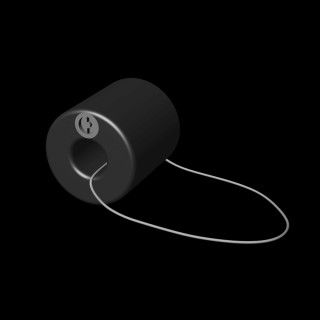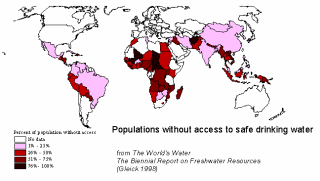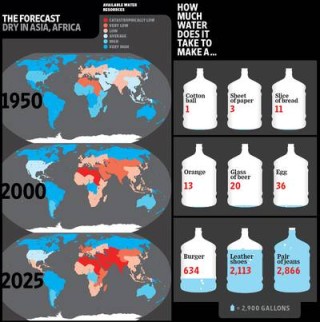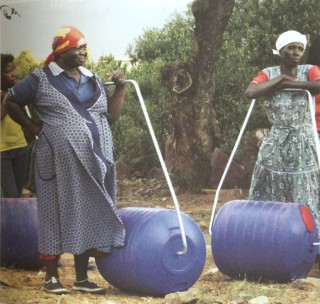- Manufacturer: Q Drum Ltd
- Material: polyethylene
- Dimensions: 47 × 43 cm
- www.qdrum.co.za

Index
- Drinking Water Humans have been storing and distributing water for centuries. Before, when people lived as hunters/collectors, river water was applied for drinking w
- Transport The Hippo water roller, or Hippo roller, is a device for carrying water more easily and efficiently than traditional methods, particularly in the deve
- Filtration The Aquaduct is a pedal-powered concept vehicle that transports, filters, and stores water for the developing world. [...] As the rider pedals, a pump
- Wheels Up till now, it is still a mystery as to who invented the wheel and when the wheel was invented. According to archaeologists, it was probably invented
- Barrels In Europe in ancient times liquids like oil and wine were carried in vessels, for instance amphora, sealed with pine resin. The Romans began to use ba
Humans have been storing and distributing water for centuries. Before, when people lived as hunters/collectors, river water was applied for drinking water purposes. When people permanently stayed in one place for a long period of time, this was usually near a river or lake. When the human population started growing extensively, the water supply was no longer sufficient. Drinking water needed to be extracted from a different source.
About 7,000 years ago, Jericho (Israel) stored water in wells that were used as sources. People also started to develop drinking water transport systems. The transport took place through simple channels, dug in the sand or in rocks. Later Egypt used hollow palm trees and China and Japan used bamboo stalks. Eventually one started using clay, wood and even metal. […] The Romans were the greatest architects and constuctors of water distribution networks in history. They used river, spring or groundwater for provisioning. The Romans built dams in rivers, causing lakes to form. The lake water was aerated and than supplied. Mountain water was the most popular type of water, because of its quality.
For water transport the aquaducts where built. Through these aquaducts water was transported for tens of miles. Plumming in the city was made of concrete, rock, bronze, silver, wood or lead. Water winnings were protected from foreign pollutants.
Access
Since the 1960s widespread acute water shortages have attracted increasing attention. For example, 1981–1990 was declared the International Drinking Water Supply and Sanitation Decade. Following this, in 1992 the Earth Summit in Rio de Janeiro set goals for sustainable development, including guaranteeing every individual access to clean water and sanitation. Significant progress has been made since then, but an enormous challenge remains. Sound management of water resources and access to water and sanitation services are now regarded as key components of sustainable development, particularly as a precondition for the steady improvement in living standards in developing countries.

Projections
One of the Millennium Development Goals (MDGs) by 2015 is to reduce by half the proportion of people unable to reach or afford safe drinking water.
Based on UN population projections, it is estimated that by 2025 more than 2.8 billion people in 48 countries will face water stress or scarcity conditions.
Population Growth
Based on assumptions of population growth, projections of development and climate change, the Stockholm Environment Institute has estimated that the proportion of the world's population living in countries with significant water stress will increase from approximately 34% in 1994 to 63% in 2025, including large areas of Africa, Asia, and Latin America. This will impact their lives and livelihood.
Consumption
All around the world water consumption per inhabitant varies tremendously. For instance, an American on average uses 500 litres a day; a western European, 150 litres and an African only 50 litres a day. A country like Rwanda, in the heart of Africa, has an average water consumption of 10 litres per person per day. Kuwait, occupying the northeastern part of the Arabian peninsula, has a year rainfall of 23-206 mm per year (The average annual rainfall in The Netherlands is 800 mm). Their inhabitants use 30 litres of water per person per day. In the Western countries, a bath uses 80 litres of water compared to only 35 litres used by a shower. There are carwash machines using between 100-300 litres of water per car. 40 litres (5 buckets) would be more than enough. A regular flush uses around 8 litres of water, almost as much as a Rwandese has for drinking, cooking and washing purposes for the whole day!

The Hippo water roller, or Hippo roller, is a device for carrying water more easily and efficiently than traditional methods, particularly in the developing world. It consists of a barrel-shaped container which holds the water and can roll along the ground, and a handle attached to the axis of the barrel. Currently deployed in rural Africa, its simple and purpose-built nature makes it an example of appropriate technology. [...] The barrel, originally called 'Aqua Roller', was the brainchild of two engineers, Pettie Petzer and Johan Jonker, who had previously been involved in the development of military materiel during apartheid in South Africa.

The Aquaduct is a pedal-powered concept vehicle that transports, filters, and stores water for the developing world. [...] As the rider pedals, a pump attached to the pedal crank draws water from a large holding tank, through a carbon filter, to a smaller, clean tank. A clutch engages and disengages the drive belt from the pedal crank, enabling the rider to filter the water while traveling or while stationary. The clean tank is removable and closed for contamination-free home storage and use.
Up till now, it is still a mystery as to who invented the wheel and when the wheel was invented. According to archaeologists, it was probably invented in around 8,000 B.C. in Asia. The oldest wheel known however, was discovered in Mesopotamia and probably dates back to 3,500 B.C.
In Europe in ancient times liquids like oil and wine were carried in vessels, for instance amphora, sealed with pine resin. The Romans began to use barrels in the 3rd century AD, as a result of their commercial and military contacts with the Gauls, who had been making barrels for several centuries.
For nearly 2,000 years barrels were the most convenient form of shipping or storage container for those who could afford the superior price. All kinds of bulk goods, from nails to gold coins, were stored in them. Bags and most crates were cheaper, but they were not as sturdy and they were more difficult to manhandle for the same weight. Barrels slowly lost their importance in the 20th century, with the introduction of pallet-based logistics and containerization.





























































































